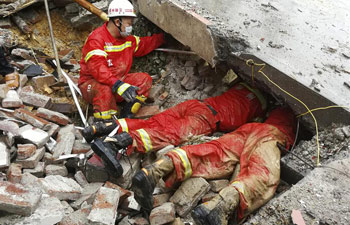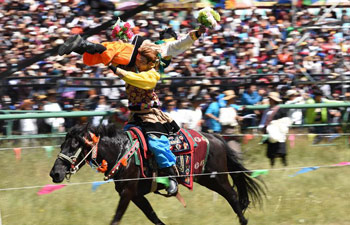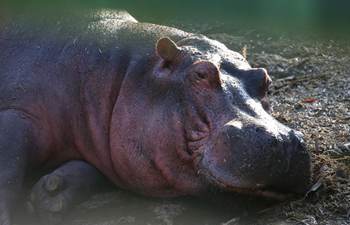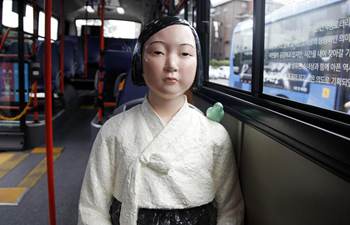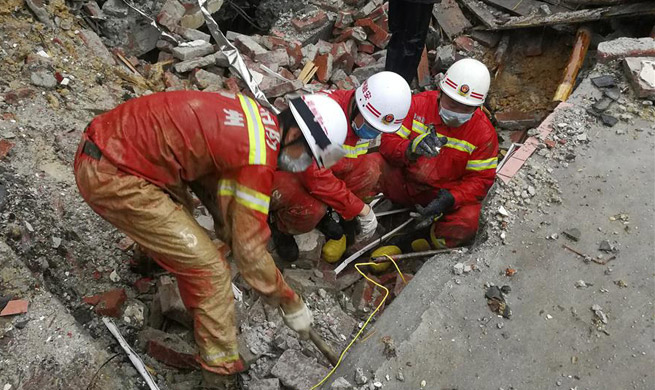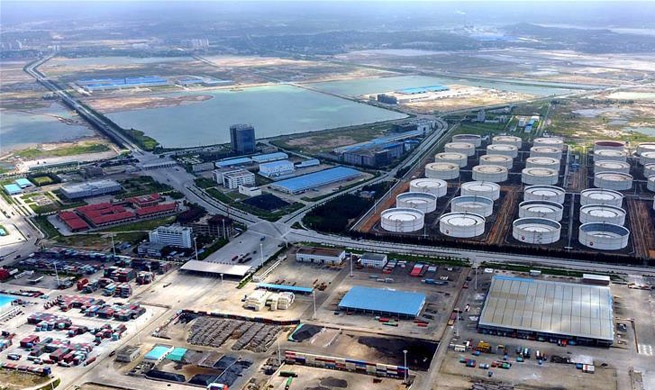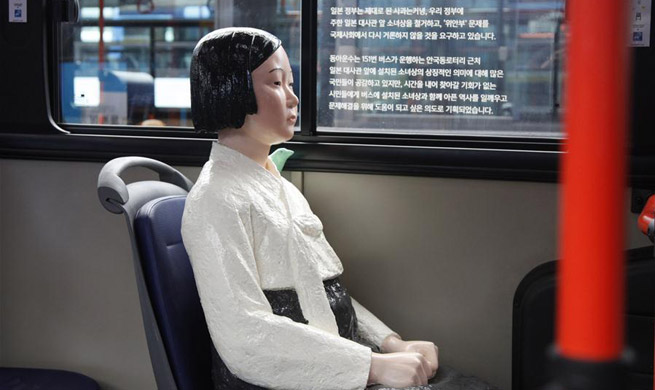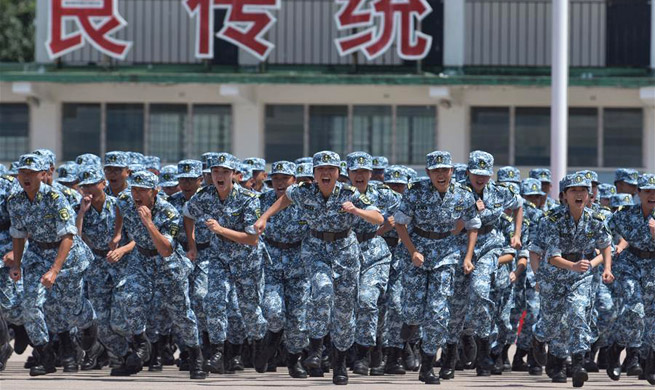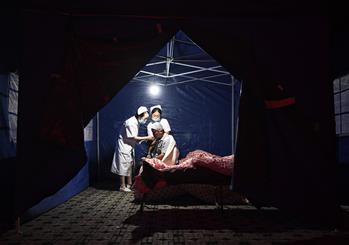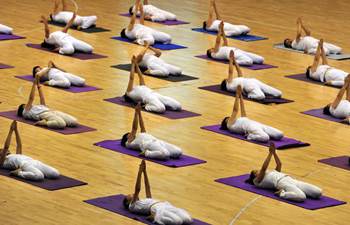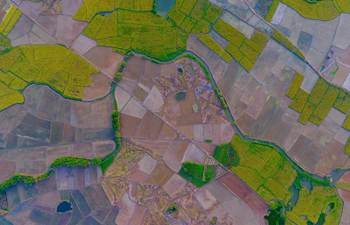by Xinhua writers Guo Ying and Yuan Quan
BEIJING, Aug. 14 (Xinhua) -- Yu Haibo first came to "Dafen Oil Painting Village" in 2004. Ever since, he has been telling the stories of the "world's largest oil painting reproduction factory" through his lens.
Yu's documentary film "China's Van Goghs" won the best China-foreign co-produced documentary at the Beijing International Film Festival in April. Recently, it was screened in many international film festivals, including the 48th Vision Du Reel International Documentary Film Festival 2017 in Switzerland, TRT Documentary Awards Turkey 2017 and the New Zealand International Film Festival. Yu also won the best director in Japan's 2017 Skip City International D-Cinema Festival.
Dafen lies in a suburb of Shenzhen, in China's Guangdong Province. In 1989, Hong Kong painter Huang Jiang started an oil painting business and gradually gathered an army of painters to reproduce classic paintings.
Photographer and filmmaker Yu has formed deep bonds with painters such as Zhao Xiaoyong, who came from rural Hunan Province and has made more than 100,000 copies of Van Gogh's works. Another friend, Zhou Yongjiu, and his apprentice have painted more than 300,000 classic replicas. They are called "China's Van Goghs". Their works sell in tourist shops and stores around the world.
Yu believes the phenomenon of Dafen Oil Painting Village is unprecedented in art history. The peasants-turned-painters come from rural China, yet their personal destiny is in European culture. Yu describes feeling "a kind of artistic power that passes through time and space, integrating eastern and western culture".
Yu started taking pictures in Dafen in 2005, when traditional film still dominated. He took around 20 rolls of film a day and many in the village became familiar with the cameraman with long hair.
Yu was backed by Huang Jiang. After Yu discussed his plan, Huang took him to several studios to meet the students he trained in the early days.
"I had deep conversations with those painters. We sat together to drink Chinese tea served in a complex ceremonial procedure. While sampling tea, I also savored their life stories," Yu says.
Yu became good friends with the painters. He is often invited to their homes for dinner, drinking and karaoke.
"Their paintings and lives, expectations and dreams are deeply connected to me," says Yu. "They got used to communicating through the lens and I often kept my sights low to capture the emotions."
Yu's photo story on Dafen Oil Painting Village won the 49th World Press Photography Contest 2006, and was displayed by the San Francisco Modern Art Musuem and London's Victoria and Albert Museum.
In 2011, Yu began to work with his daughter, Yu Tianqi, on filming a documentary.
The film, "China's Van Goghs", shows how the principal subject, Zhao Xiaoyong, felt a deep affinity with Vincent Van Gogh after so many years of immersion in the master's brushstrokes. He longed to see Van Gogh's original works. The film recorded his journey to Europe to see what Van Gogh's paintings really look like.
In a souvenir shop near the Van Gogh museum in Amsterdam, Zhao saw one of his best clients, an Amsterdam art dealer. He was also excited to see his copies on sale. When Zhao learned the retail price of his work was more than ten times what he was paid, he was silent and kept smoking. When he eventually arrived at the museum and stood in front of the original Van Goghs, he was not happy as expected.
"In Europe, we talked heart to heart late into the night. It was a thought-provoking journey for Zhao. He began to reflect on the meaning of Van Gogh's work as well as the value of his own art," Yu says.
The documentary offers a perspective on the relationship between China and the globalized world, he says.
"These Chinese painters working intensively to produce copies of Western masterpieces still play the role of cheap labor in the chain of global capitalism. But I think their paintings are different from those industrial products generated on an assembly line," Yu says. "Their creativity and artistic imagination can be reflected in the strokes of their copies of Van Gogh's paintings. I am deeply touched by their artistic pursuit."
The documentary was well-received when it was screened in many international film festivals. The most-asked question from the audience is, "What is the current situation of the painters?"
After Zhao returned from Europe, he began to paint original works, instead of copying classics. He gradually transferred his main business to Zhejiang, where he opened a gallery in Ningbo. Now most of his works are sold in China. Other painters are making bold attempts at their own art too.
The struggle from copier to creator mirrors the complexity of the transition from "made in China" to "created by China" in the 21st Century, Yu says.
"Dafen is exploring a new development path by producing original art works and creative art-related products. New forms of art and artists might spring up in the future," says Yu.





